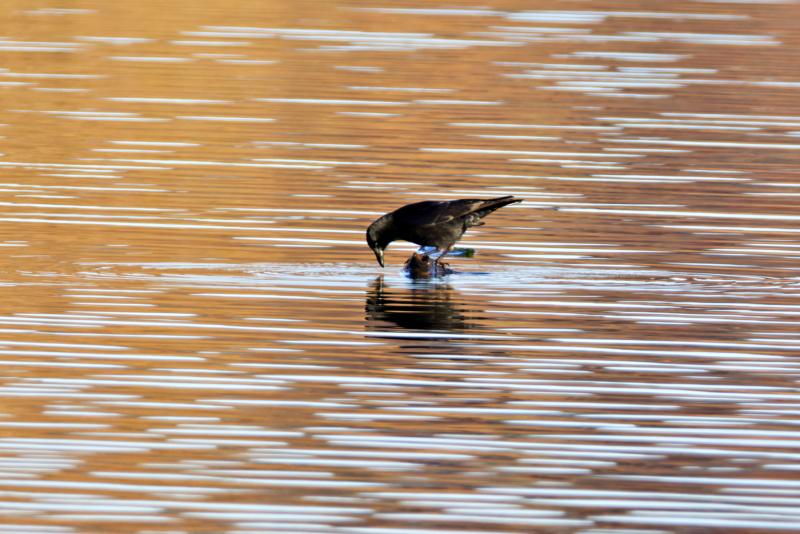I recently photographed a crow near the Sally Jones Causeway at the Sequoyah National Wildlife Refuge in Oklahoma. This particular crow was perched on a log floating in the water, seemingly focused on catching something below the surface. Watching and photographing this bird was fascinating, but it left me with one big question: was this an American Crow or a Fish Crow?

One key identifier of these two species is their vocalization, as it provides a clear and distinct way to differentiate them. Unfortunately, this crow remained silent during my observation, making identification tricky without the auditory clues that are often crucial for telling them apart. After doing some research at home, I’m still unsure. Here’s what I found about the differences between American Crows and Fish Crows.
Differences Between American Crow and Fish Crow
While American Crows and Fish Crows are visually alike, distinguishing them can be challenging without vocalizations or a direct comparison. However, examining a combination of characteristics can provide valuable clues:
Size and Weight
- American Crow: Larger, with an average weight of around 16 ounces.
- Fish Crow: Smaller, typically weighing between 10 or 11 ounces.
Vocalization
- American Crow: Known for its loud, full-throated “caw” sounds. Their calls are complex and used for various purposes like territorial defense and communication.
- Fish Crow: Recognized by its nasal “uh-uh” call, often given in pairs. This distinct sound is a reliable way to differentiate it from the American Crow.
Habitat and Range
- American Crow: Found across the United States, they are more commonly seen inland and have a broader range.
- Fish Crow: Typically associated with water environments such as coasts, rivers, and marshlands. Their range is concentrated in the southeastern United States, but they’ve been expanding inland.
Diet
- American Crow: Omnivorous, eating seeds, fruits, insects, small animals, carrion, and even raiding nests for eggs and chicks.
- Fish Crow: Also omnivorous but leans more toward aquatic prey like crabs and shrimp. They also raid waterbird nests and eat turtle eggs.
Physical Appearance
- Both species share glossy black plumage. However:
- American Crow: Slightly larger with an iridescent purple sheen in direct light.
- Fish Crow: Smaller with silkier plumage that can display blue or greenish sheens. They often have slightly more slender bills and feet.
What Do You Think?
Based on the information above, do you think the crow I photographed was an American Crow or a Fish Crow? Have you used specific experiences or methods to identify these birds in the field? Share your tips and observations in the comments! If you’ve encountered these species, what clues helped you identify them? Let me know in the comments!
